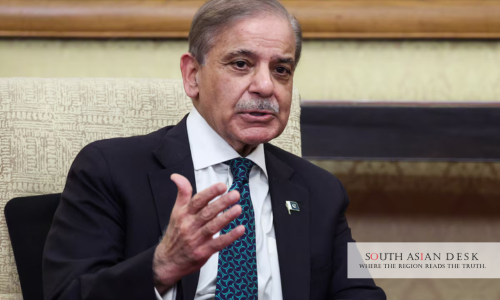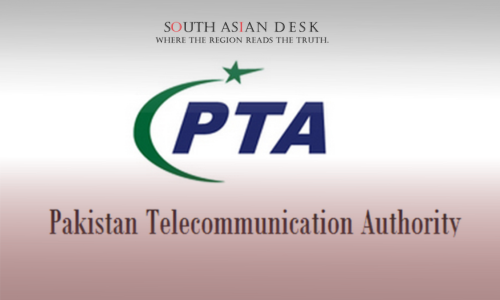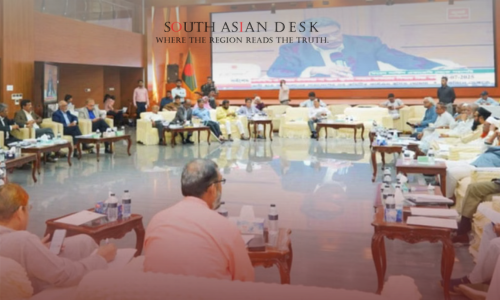WASHINGTON: Pakistan’s Prime Minister Shehbaz Sharif urged American investment in Pakistan during a meeting with US President Donald Trump at the White House on Thursday, September 25, 2025, focusing on sectors like agriculture, technology, mining, and energy to revive the nation’s economy. Accompanied by Army Chief Field Marshal Asim Munir, Sharif sought to strengthen the Pakistan-US partnership, which Trump praised as mutually beneficial, though no formal agreements were announced immediately. The Trump meeting, held on the sidelines of the United Nations General Assembly, also touched on regional peace efforts, including Gaza.
Why American Investment Matters for South Asia
In a region grappling with economic fragility and geopolitical tensions, American investment in Pakistan could stabilise supply chains, enhance energy security, and counterbalance influences from China and Russia. For South Asia, where Pakistan’s stability affects trade corridors and counter-terrorism, this overture signals a potential thaw in US-Pakistan ties, fostering growth that ripples across borders and mitigates risks of instability.
Key Highlights from the Trump Meeting
The meeting marked the first such engagement between a Pakistani civilian leader and Trump at the White House since 2019, when he hosted then-Prime Minister Imran Khan. Held in the Oval Office around 2:00 PM EDT, the approximately 45-minute discussion, according to Sharif’s office, emphasized economic collaboration as a cornerstone of renewed ties. Sharif highlighted Pakistan’s reform agenda, inviting US firms to tap into untapped potentials in mining and tech, sectors projected to attract USD 10 billion in foreign direct investment over the next five years per government estimates.
Trump, fresh from unveiling a 21-point Middle East peace plan at the UN, reciprocated by reiterating his earlier call for American investment in Pakistan, particularly in oil exploration. According to Sharif’s office, the Prime Minister lauded Trump’s “efforts to bring about an immediate end to the war in Gaza,” linking economic overtures to broader diplomatic goodwill. Munir’s presence underscored the military’s role in bilateral security dialogues, building on his solo White House visit earlier in 2025.
No joint communique emerged post-meeting, but Trump told reporters beforehand: “Munir is a very great guy, and so is the prime minister.” This Trump meeting follows a pattern of incremental engagements, including Sharif’s recent interactions with Saudi and Russian leaders, positioning Pakistan as a pivotal player in US-led regional initiatives.
Sectors Targeted for American Investment in Pakistan
Sharif’s pitch during the meeting zeroed in on four priority areas, aligning with Pakistan’s Special Investment Facilitation Council (SIFC) framework launched in 2023. In agriculture—contributing 24 per cent to GDP and employing 42 per cent of the workforce, US expertise in precision farming could modernise irrigation systems strained by climate variability. The technology sector, encompassing fintech and IT exports valued at USD 3.5 billion annually, offers low-cost talent pools for Silicon Valley offshoring.
Mining and energy drew particular emphasis, with Pakistan holding USD 6 trillion in untapped mineral reserves, including rare earths critical for US green tech. Trump’s prior advocacy for oil ventures echoes Pakistan’s 2024 bidding rounds, which secured USD 500 million in initial commitments from international players. According to the Ministry of Foreign Affairs, these sectors could generate 1 million jobs by 2030, addressing youth unemployment at 10 per cent in urban Khyber Pakhtunkhwa and Punjab.
Broader Diplomatic Context
The Trump meeting also referenced a recent mutual defence pact with Saudi Arabia signed on September 17, 2025, which bolsters Pakistan’s strategic leverage for attracting American investment in Pakistan. Analysts note that US firms, deterred by past security concerns, may view this as a stabilising factor.
Evolution of Pakistan-US Economic Ties
Bilateral trade hit USD 7.5 billion in fiscal 2024, with US imports from Pakistan—textiles and apparel—dominating at 70 per cent. Yet, Pakistan’s USD 128 billion external debt and 22 per cent inflation underscore the urgency of American investment in Pakistan. The Trump meeting builds on a September 27, 2024, sideline discussion at the UN where Sharif urged deeper trade links with the US-Pakistan Business Council, targeting pharmaceuticals and renewables.
Historical precedents include the 2019 Sharif-Trump precursor, which yielded USD 1.3 billion in aid but faltered on Afghanistan. Recent State Department briefings affirm ongoing intelligence cooperation, with no public discord aired during this Trump meeting.
Regional Implications
Pakistan’s overtures come amid South Asian flux: India’s USD 50 billion FDI inflows contrast Pakistan’s USD 1.9 billion in 2024, per World Bank data. The meeting could pivot resources towards the China-Pakistan Economic Corridor (CPEC), valued at USD 62 billion, by blending US tech with Chinese infrastructure. Gaza discussions, per Sharif’s praise, tie economic incentives to Pakistan’s mediation role as the sole nuclear-armed Muslim-majority nation.
Challenges and Opportunities Ahead
Attracting American investment in Pakistan faces hurdles like regulatory opacity and geopolitical frictions, including US sanctions on certain Pakistani entities. Yet, the SIFC’s one-window policy has streamlined approvals, reducing timelines from 18 to 6 months. During the Trump meeting, Sharif touted fiscal reforms under the USD 7 billion IMF programme, stabilising the PKR at 278 to the USD.
Energy security looms large: Pakistan’s 25 per cent renewable shortfall could benefit from US solar investments, mirroring a USD 200 million deal with Texas firms in 2024. The meeting’s timing, post-UNGA, amplifies calls for a bilateral investment treaty, dormant since 2012.
Background: Historical US-Pakistan Investment Flows
US-Pakistan economic engagement dates to the 1950s SEATO pact, peaking at USD 5 billion annual aid in the 2000s War on Terror era. Post-2018, ties cooled, but 2025’s rebound reflects Trump’s “America First” pivot towards resource-rich allies. Cumulative American investment in Pakistan stands at USD 2.5 billion across 500 projects, per Commerce Ministry data, with textiles absorbing 40 per cent.
The Trump meeting evokes 2019’s energy MOU, which unlocked USD 1 billion in LNG imports. Amid South Asia’s USD 4 trillion GDP bloc, such infusions could elevate Pakistan’s 3.5 percent growth trajectory.
What’s Next: Pathways for American Investment Post-Trump Meet
Follow-up delegations from the US Chamber of Commerce are slated for Islamabad in October 2025, targeting memoranda in mining. According to Sharif’s office, a trilateral forum with Saudi Arabia may emerge, channelling USD 5 billion in joint ventures. As aftershocks from the Trump meet settle, sustained diplomacy could unlock American investment in Pakistan, fortifying economic resilience against regional headwinds.
Ultimately, this meeting heralds a chapter where American investment in Pakistan bridges security and prosperity, charting a steadier course for South Asia’s northwest frontier.
Published in SouthAsianDesk, September 26th, 2025
Follow SouthAsianDesk on X, Instagram, and Facebook for insights on business and current affairs from across South Asia.






